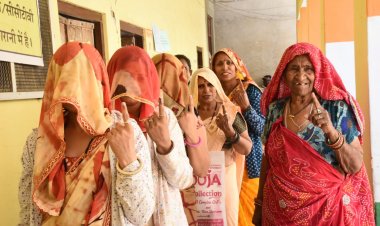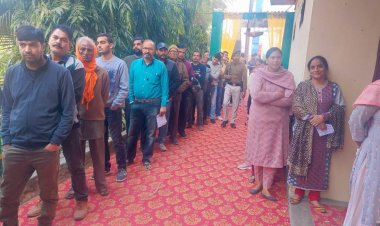Urban India aspires for 5G; Bharat connectivity on BSNL’s shoulders
It was a somewhat pleasant surprise when the Union Cabinet approved a bailout package of Rs 1.64 lakh crore for the financially stressed BSNL. The opening sentence of the official release announcing the package for the sick public sector firm largely left with a rural subscriber base, read: “Telecom is a strategic sector. The presence of BSNL in the telecom market acts as a market balancer.”

Like it or not, it would not be an exaggeration to say that telecom service providers like Reliance Jio and Bharti Airtel hold the key to the lifeline of us citizens, more so in cities than villages. Without their services, lives would come to a halt.
The private sector has come to occupy this strategic role in our lives in an economy that is more market-driven. The government itself makes no bones about it, stating in no uncertain terms that it has no business to be in business. The thinking was evident when the government sold the national carrier Air India to the Tatas. No sector was sacrosanct and telecom was flaunted as a success story of this model.
That said, it was a somewhat pleasant surprise when the Union Cabinet, chaired by Prime Minister Narendra Modi, approved a bailout package of Rs 1.64 lakh crore for the financially stressed Bharat Sanchar Nigam Ltd (BSNL). The opening sentence of the official release announcing the package for the sick public sector firm largely left with a rural subscriber base, read: “Telecom is a strategic sector. The presence of BSNL in the telecom market acts as a market balancer.”
The announcement is a pleasant surprise for those who share a concern for the poor connectivity in rural areas. The gap was felt more during the Covid crisis when schools and colleges remained shut for physical classes but those privileged to have broadband connections and 4G data connection got access to education, which certainly had become exclusive at least during the pandemic.
Is it a policy turnabout? Has the realization dawned on the government that not all can be left to the private sector, especially in rural landscapes where the rules of business may not be ideally suited, as they are sought to be pushed through in cities and towns? So, the good old BSNL has been tasked with improving the rural teledensity not only in terms of voice but also data packages, which have become equally or even more essential than voice telephony. Funds under different heads for scaling up the bandwidth to 4G in villages and small towns along with broadband wireline or Wi-Fi would be at the disposal of BSNL, which, as promised by Telecom Minister Ashwini Vaishnaw, would become lean, mean and professionally competent.
Let’s look at the details of the package which looks ambitious and apt to respond to poor connectivity in villages. While the service providers are bidding aggressively for a super speed of 5G in cities, thousands of villages still manage with 2G or at best 3G. As part of the Rs 1.64 lakh crore package, BSNL would be provided resources for the 4G infrastructure. The company, which at present is in dire straits, would be allotted spectrum in the 900/1800 MHz band administratively at the cost of Rs 44,993 crore through equity infusion. The equity infusion would mean that this money would be pumped in by the Government, the owner of the company, without being shown as debt on the balance sheet. “With this spectrum, BSNL will be able to compete in the market and provide high-speed data using their vast network…,” according to the official statement. Let’s keep the pressure on and hope that the execution of the plan takes place without any major flaws.
With the right kind of tech solutions, BSNL, which is mostly operating in the rural and far-flung difficult terrains, would deploy 4G technology stack. The Government will fund the capital expenditure under this head to the extent of Rs 22,471 crore.
For better synergies, Bharat Broadband Network Ltd (BBNL), the special purpose vehicle (SPV) formed to implement the ambitious BharatNet project, will be merged with BSNL. However, the government has clarified that the infrastructure created under BharatNet will continue to be a national asset, accessible on a non-discriminatory basis to all the telecom service providers. This works fine for the subscribers in the hinterland.
How important the development is can be gauged from the Telecom Regulatory Authority of India (TRAI) data for the country’s telephone subscriber base and spread. There are more people living in villages than cities, but the teledensity is the contrary. As on 30 April 2022, of the 117 crore telephone subscribers, urban India accounted for 65 crores while Bharat had 52 crores. As against an urban teledensity of 135 per cent, it is 58 per cent for the rural areas. The situation regarding wireline or Wi-Fi, a crucial infrastructure for delivering governance, education and health to villages, is rather precarious. Of the 25 crore wireline connections in the country, the rural share is just about two crores.
The problem has been two-fold with regard to rural connectivity. The private sector big boys are motivated purely by business. Their business metrics are not guided merely by the number of subscribers, but by things like Average Revenue Per User or ARPU. The ARPU for them is about Rs 130-140 in cities but it is just about Rs 50 in villages. Their ambition is to take the ARPU up to Rs 200. So, why will they be interested in investing in the hinterland? Well, that obligation of investing in Bharat goes to BSNL, which deserves resources for living up to the challenge.
(Prakash Chawla is a New Delhi-based independent journalist.)








































